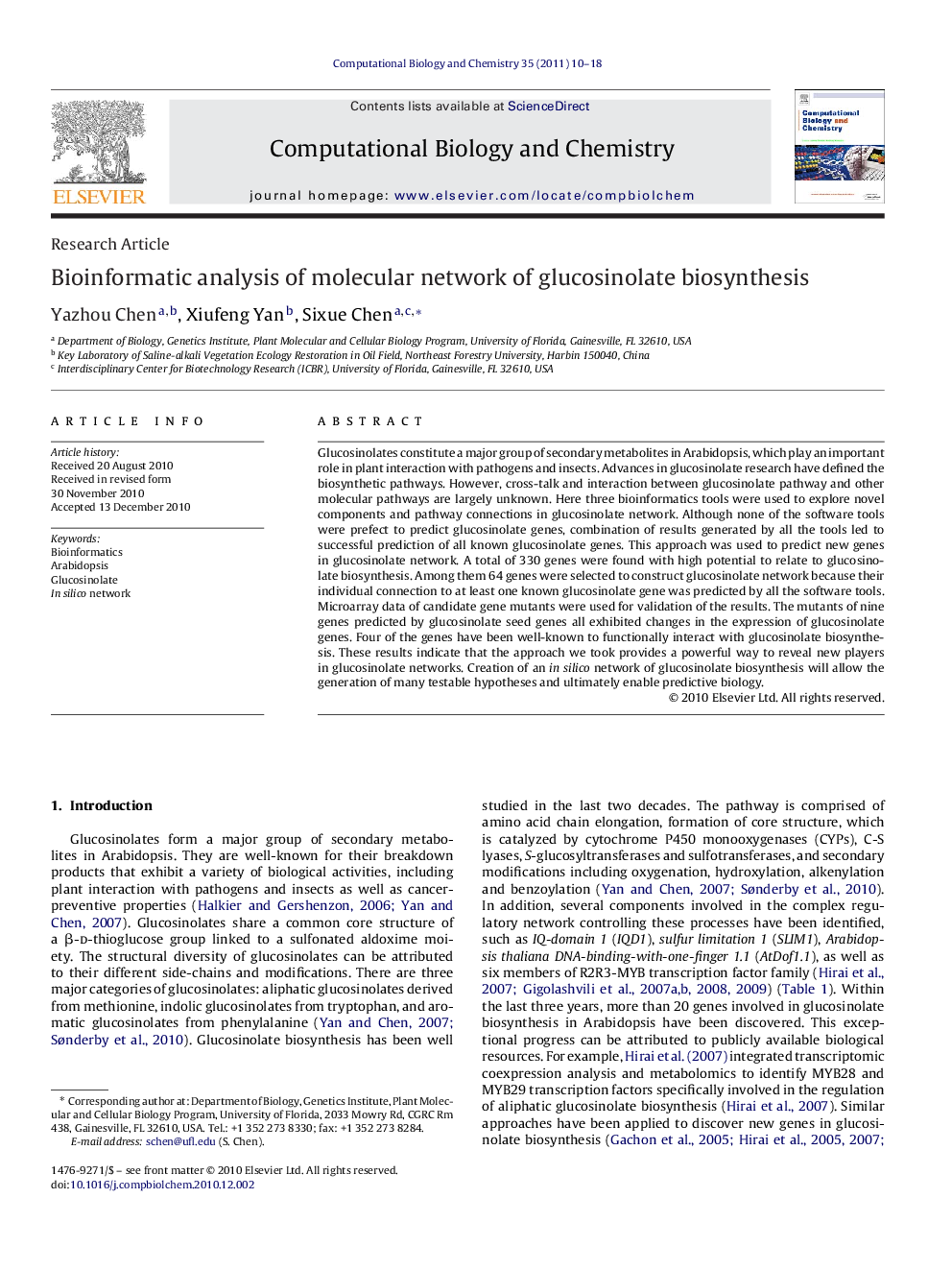| Article ID | Journal | Published Year | Pages | File Type |
|---|---|---|---|---|
| 15261 | Computational Biology and Chemistry | 2011 | 9 Pages |
Glucosinolates constitute a major group of secondary metabolites in Arabidopsis, which play an important role in plant interaction with pathogens and insects. Advances in glucosinolate research have defined the biosynthetic pathways. However, cross-talk and interaction between glucosinolate pathway and other molecular pathways are largely unknown. Here three bioinformatics tools were used to explore novel components and pathway connections in glucosinolate network. Although none of the software tools were prefect to predict glucosinolate genes, combination of results generated by all the tools led to successful prediction of all known glucosinolate genes. This approach was used to predict new genes in glucosinolate network. A total of 330 genes were found with high potential to relate to glucosinolate biosynthesis. Among them 64 genes were selected to construct glucosinolate network because their individual connection to at least one known glucosinolate gene was predicted by all the software tools. Microarray data of candidate gene mutants were used for validation of the results. The mutants of nine genes predicted by glucosinolate seed genes all exhibited changes in the expression of glucosinolate genes. Four of the genes have been well-known to functionally interact with glucosinolate biosynthesis. These results indicate that the approach we took provides a powerful way to reveal new players in glucosinolate networks. Creation of an in silico network of glucosinolate biosynthesis will allow the generation of many testable hypotheses and ultimately enable predictive biology.
Graphical abstractFigure optionsDownload full-size imageDownload as PowerPoint slideResearch highlights▶ We implemented three software tools to predict genes related to glucosinolate biosynthesis. ▶ A total of 330 candidate genes were selected and 64 genes were used to construct a robust network related to glucosinolate biosynthesis. ▶ Microarray data of mutants and a reciprocal approach were employed to validate the network.
